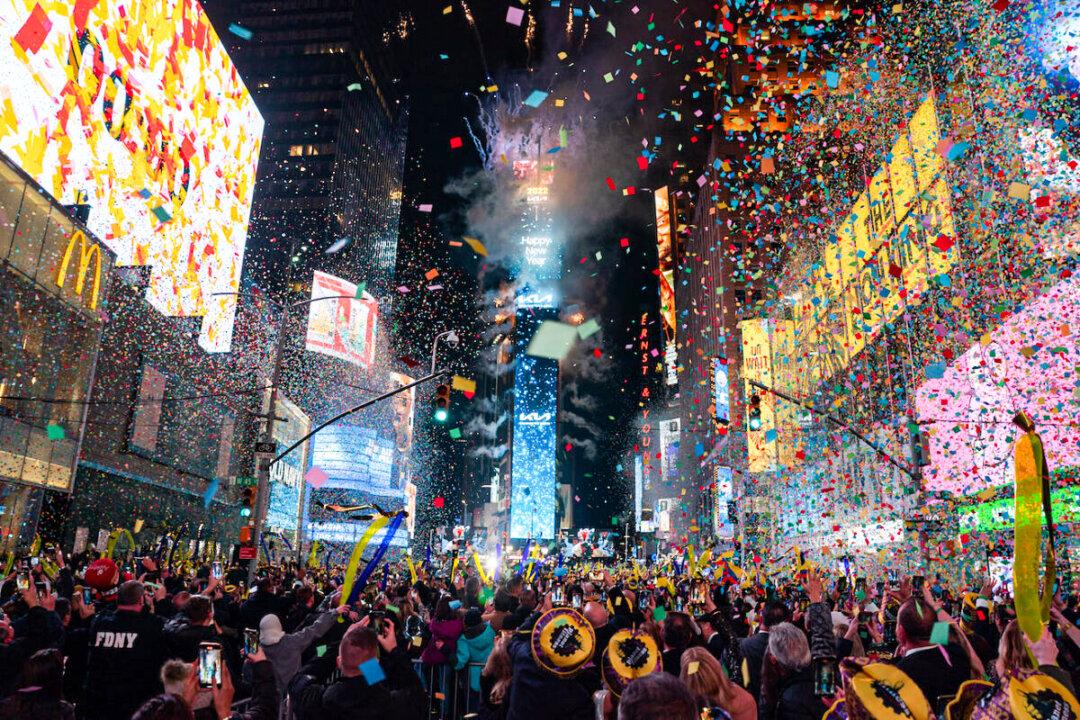The world welcomed 2022 with largely reduced crowds and fireworks amid the spread of the more contagious, albeit less severe, Omicron variant in the ongoing COVID-19 pandemic. In some regions, events were scaled back or canceled outright.
The CCP (Chinese Communist Party) virus, which causes the disease COVID-19, has been confirmed in upward of five million people who died since the start of 2020. Governments across the globe have used the CCP virus and new variants as justification to subject people to rounds of lockdowns and restrictions, as well as mask and vaccine mandates, sparking numerous widespread public protests over the past two years.




